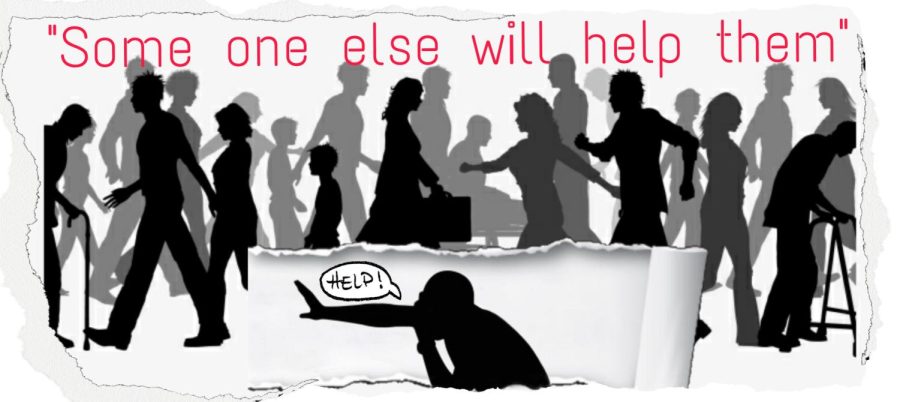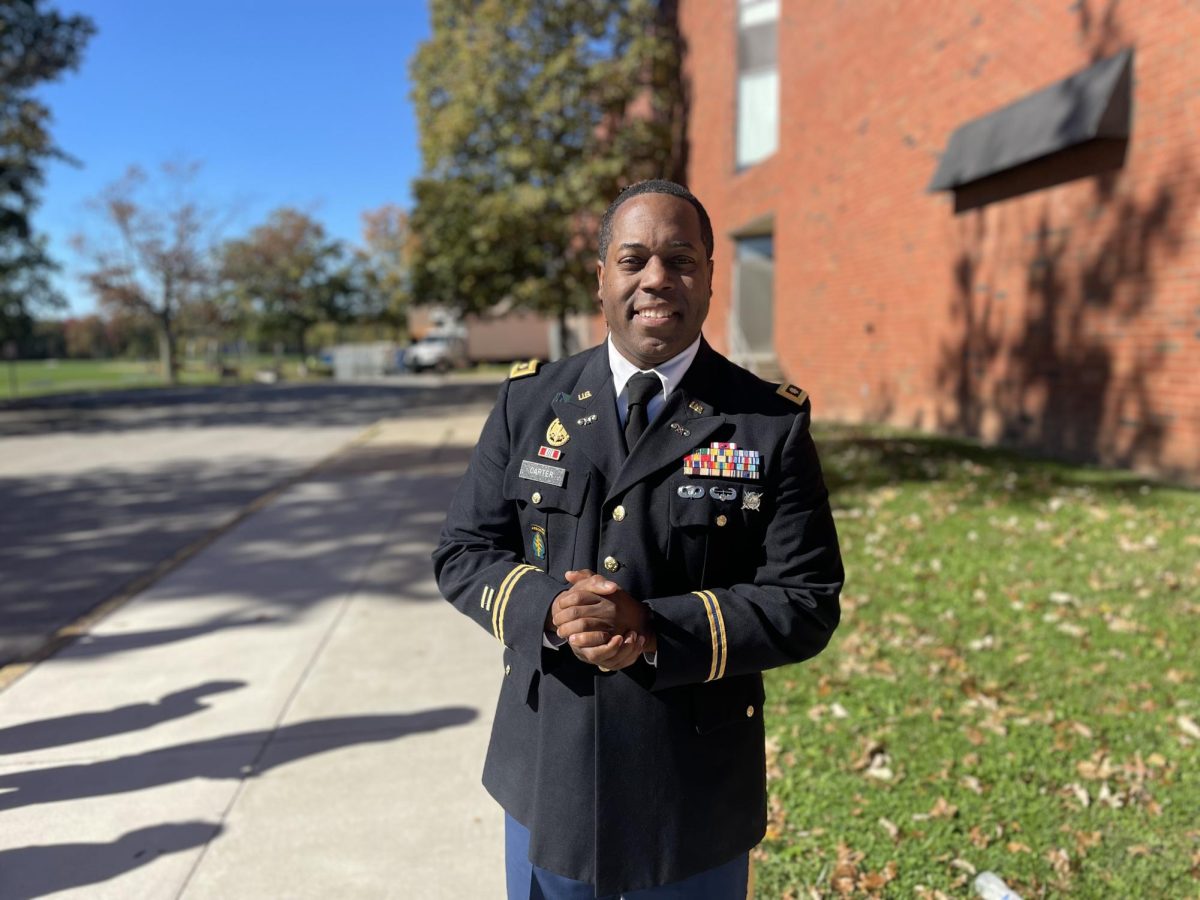Taking a Closer Look at the ‘Bystander Effect’
January 28, 2022
Last Oct. in Philadelphia, a woman was sexually assaulted on a SEPTA train by a 35-year-old homeless man named Fiston Ngoy. It was reported that there were numerous people on the train witnessing the assault, but no one did anything to help her.
Ngoy had been following the woman 40 minutes before the assault, groping her and touching her inappropriately. Ngoy was seen being pushed away several times by the woman, but that didn’t stop him from assaulting her later on.
Everyone who witnessed the assault on the train sat there and watched. Some even pulled out their phones, pointing them in the direction of the woman, and seemed to record everything going down. No passenger in that train called the police for help. A transportation authority employee finally called 911 near the last stop of the ride after seeing what was going on. Police arrived at the final stop of the ride and arrested the 35-year-old man, sending the woman to a hospital.
This entire event brought up questions like why didn’t any of the passengers do anything about it? Why had no one called 911 when they had their phones out? Why did people just watch the whole time until a worker had to call 911 themself?
This may be due to the bystander effect. The bystander effect is the phenomenon that occurs when people watch a situation but never help. The greater the number of people witnessing, the less likely someone will be helped. Whenever there is a situation where someone needs help and there are many people present, most people ignore the person in need because they think that someone else will do that job for them or that there might not even be anything wrong. But there is also a possibility that none of this came into play on the Septa train last October.
One of the most famous examples of the bystander effect is the murder of Kitty Genovese. On March 13th, 1964, A 28-year-old woman named Kitty Genovese was murdered outside of her apartment building in the Kew Gardens neighborhood of Queens in New York City. According to The New York Times, before there were any updates on this murder, Kitty had 38 witnesses that saw or heard the attack and none of them called for the police. This was pretty much how the bystander effect got its name and some people even call it the “Genovese Syndrome”.
However, according to that New York Times article, most of the original information given about the murder of Kitty Genovese was proven to be a myth. Even though this horrible event did occur, there were actually witnesses who tried contacting the police. There weren’t 38 bystanders that just stood around and did nothing, so that leaves many of us curious if the bystander effect is a real thing or if it is all just a big myth that started because of the lie spread worldwide about the murder of Kitty Genovese.
There’s also some proof that the passengers on the SEPTA train didn’t even know what was going on at all. According to the Delaware County DA, the rumor of bystanders filming the rape on the train is false. During the 40 minutes that Fiston Ngoy was inappropriately touching and harassing the woman, District Attorney Jack Stollsteimer stated that other passengers may not have been present at that time. He also said that they may not have understood what they were seeing as well. ¨ People get off at every stop. That doesn’t mean when they get on and they see people interacting that they know rape is occurring, ¨ Stollsteimer stated.
“The narrative that there is a group of people callously filming and didn’t act, is simply not true.” Stollsteimer supported that by saying that one of the people who seemed to be recording, was just trying to provide a video for the authorities, confirming to the authorities that something was going on between Fiston and the woman.
There have been articles written that tell about how the bystander effect could be a myth. This article by Newscientist, in particular, tells about how a man named Richard Philpot at Lancaster University and his colleagues all studied violent situations and discovered that in 90% of them, at least one person tried to help in some way.
There are actually a few ways that the bystander effect could be a real phenomenon. According to Psychology Today, it’s natural for people to freeze up when there is an emergency because people fear that they may be too weak to help anyone in danger. This article also explained how people are too afraid to help anyone since they may be misunderstanding the situation, and could be making it seem negative when there really is no danger.
Gender can also play an important role in the reason why women don’t get the immediate help they need during a sexual assault. When there is a sexual assault of a woman, men witnessing who are under the influence of drugs or alcohol will most likely ignore a woman in danger. Some men even go as far as holding up sexist attitudes towards women and they don’t even attempt to help. There isn’t any footage of the assault on the SEPTA train released, could there have possibly just been men witnessing that didn’t bother to help the woman because of any of these reasons?
There is so much going on with this SEPTA case and there are so many mixed opinions that there really isn’t anything proven to be true so far. Some think that the passengers knew exactly what was going on and never spoke up. Some also think that many passengers didn’t have a clue about what was happening as no one really suspected that there was anything suspicious going on.
Besides the bystander effect being big cases like the murder of Kitty Genovese and the SEPTA train rape, there can also be smaller examples of the bystander effect. It could just be little occurrences that you witness at school. And whether you notice or not, there are definitely examples of the bystander effect at school.
There are examples of the bystander effect here at our school. One instance is how students gather around a school fight to record and watch in enjoyment. We all see the looks on people’s faces brighten up whenever someone yells that there’s a fight. Countless students start dashing to the directing of the fights, shoving others out of the way just to watch. Some people even post the videos they capture on social media or send the videos to their friends. There are students who do try to break up the fights but often, this isn’t the case. This could possibly be because they are too afraid to split the fight up, but many seem to watch school fights as entertainment. Lots of students love drama and watching fights go down so of course, no one really does anything to break them up. In fact, some students encourage their friends to win the fights instead of trying to break them up.
This could just be one of those things where people just want to watch school fights because it is entertaining to them and no one actually cares enough to try and help. It leaves us wondering if this really is an example of the bystander effect and there are actually people who try to stop the fight, or if no one cares at all and they just watch the fights for entertainment. It also leaves us wondering if there are any other instances that we see at school that convey the bystander effect.


